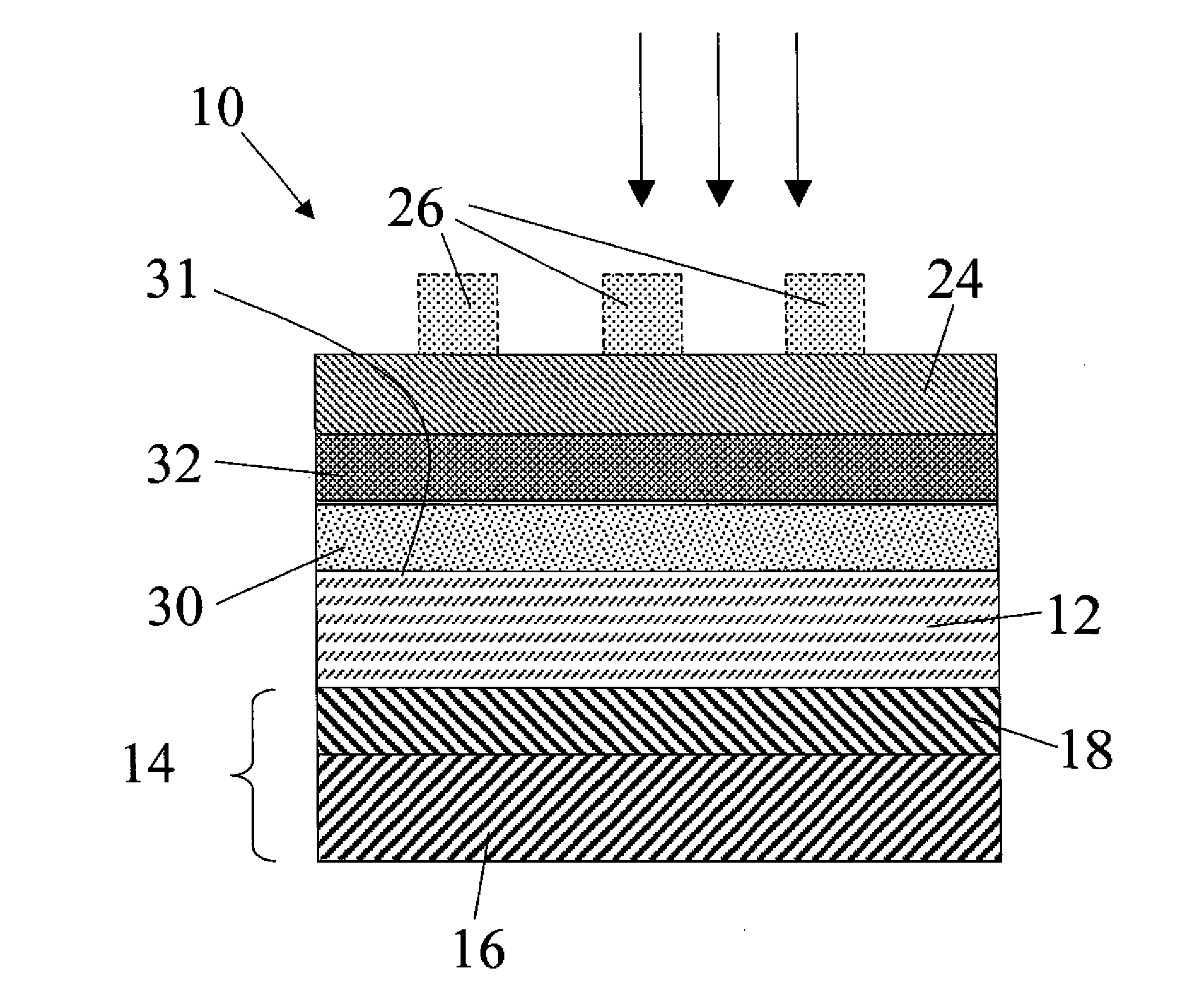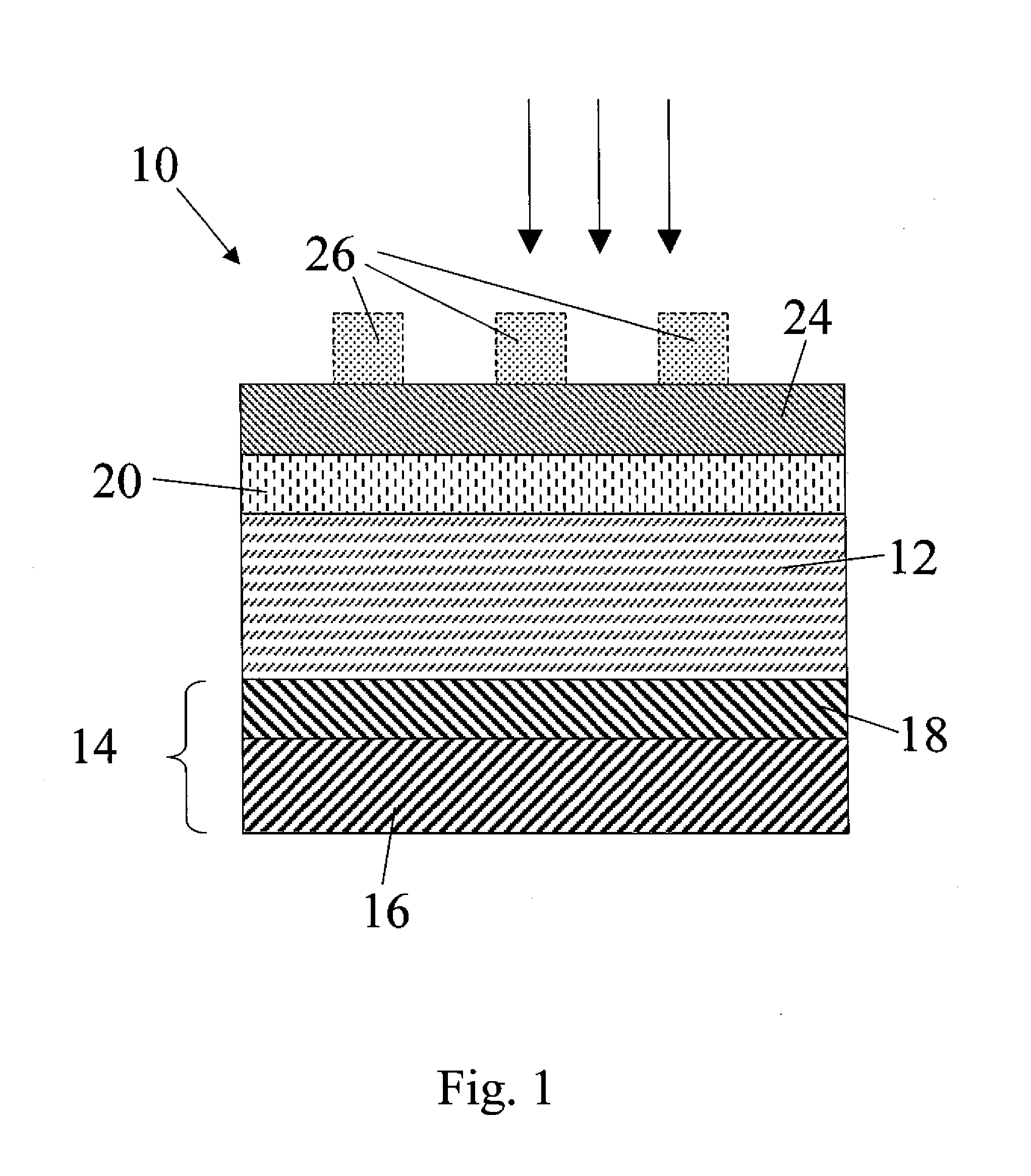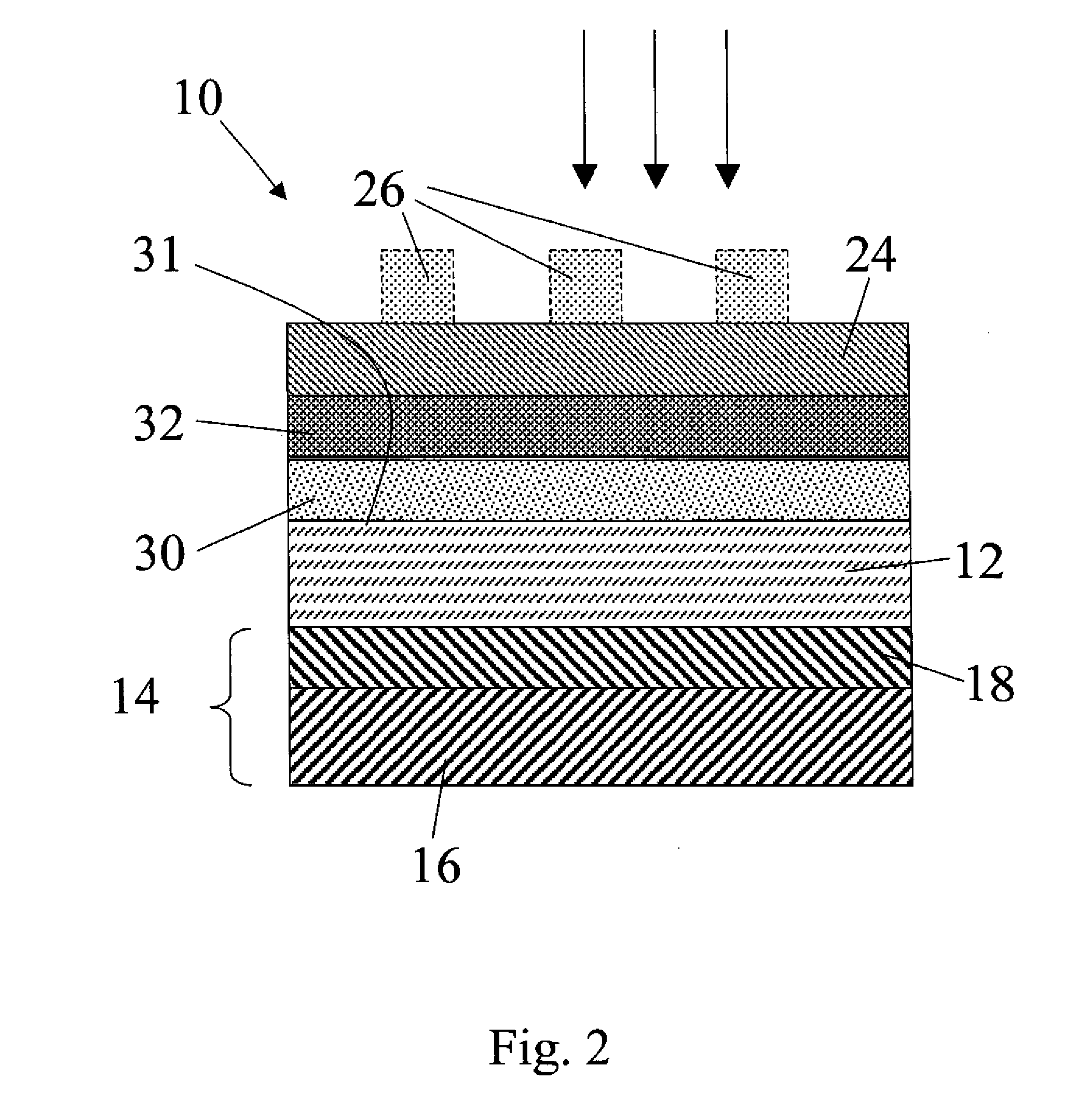Group iib/va semiconductors suitable for use in photovoltaic devices
a photovoltaic device and semiconductor technology, applied in semiconductor/solid-state device manufacturing, semiconductor devices, electrical equipment, etc., can solve the problems of poor photovoltaic behavior of devices, poor film quality, and difficult preparation of n-type zinc phosphide, and achieve the effect of improving the electronic performance of semiconductor materials
- Summary
- Abstract
- Description
- Claims
- Application Information
AI Technical Summary
Benefits of technology
Problems solved by technology
Method used
Image
Examples
example 1
[0102]The Zn3P2 samples used in this example are grown by a physical vapor transport process. Red phosphorus chips and zinc shot (99.9999%) are combined at 850° C. to form Zn3P2 powders. The powders are then processed using crystal growth techniques into polycrystalline boules 1 cm in diameter and 4 cm in length, with grain sizes of ˜1-5 mm2. The resulting crystals are diced with a diamond saw and have as-grown resistivity between 100-2000 Ωcm. Annealing with white phosphorus in sealed ampoules at 400° C. for 20 hours is effective at reducing the wafer resistivity to ˜20 Ωcm due to doping by phosphorus interstitials. Both undoped and P-doped samples are polished with diamond paste to produce Zn3P2 wafers. Samples with 1 cm diameter and 500-600 μm thickness are etched for 30 s in 2-3% (v:v) Br2 in CH3OH, rinsed in CH3OH, dried under a stream of N2, and used promptly thereafter.
[0103]ITO / Ca / Zn3P2 solar cells are fabricated from P-doped Zn3P2 samples. Freshly etched wafers are patterne...
example 2
[0104]As a way of testing the reactivity of Ca as well as another co-reactive metal other than Ca, a set of devices composed of an ITO capping layer (100 nm), a co-reactive metal (50 nm), an etched and polished Zn3P2 substrate, and a Ag back contact (200 nm) were fabricated. In one set of devices, Ca was used as the co-reactive metal. In another set of devices, Mg was used as the co-reactive metal. Typically the Voc of photolithographically-defined devices using >99% Mg as the co-reactive metal are low, oc due to the reaction between the co-reactive metal and Zn3P2. Devices incorporating Ca metal as the co-reactive species show significantly higher Voc as-fabricated. The observation of Voc>380 mV in as-fabricated devices utilizing Ca is consistent with the expected higher reactivity of Ca metal with the phosphorus in Zn3P2 as compared to Mg when used as a co-reactive species (as distinguished from the use of Mg as a capping layer as described further below). The devices were charact...
example 3
[0106]Solar cells are made in accordance with Example 1 except that for each cell in this example, Sr or Ti, respectively, is substituted for Ca.
PUM
| Property | Measurement | Unit |
|---|---|---|
| band gap | aaaaa | aaaaa |
| open circuit voltage | aaaaa | aaaaa |
| thickness | aaaaa | aaaaa |
Abstract
Description
Claims
Application Information
 Login to View More
Login to View More - R&D
- Intellectual Property
- Life Sciences
- Materials
- Tech Scout
- Unparalleled Data Quality
- Higher Quality Content
- 60% Fewer Hallucinations
Browse by: Latest US Patents, China's latest patents, Technical Efficacy Thesaurus, Application Domain, Technology Topic, Popular Technical Reports.
© 2025 PatSnap. All rights reserved.Legal|Privacy policy|Modern Slavery Act Transparency Statement|Sitemap|About US| Contact US: help@patsnap.com



